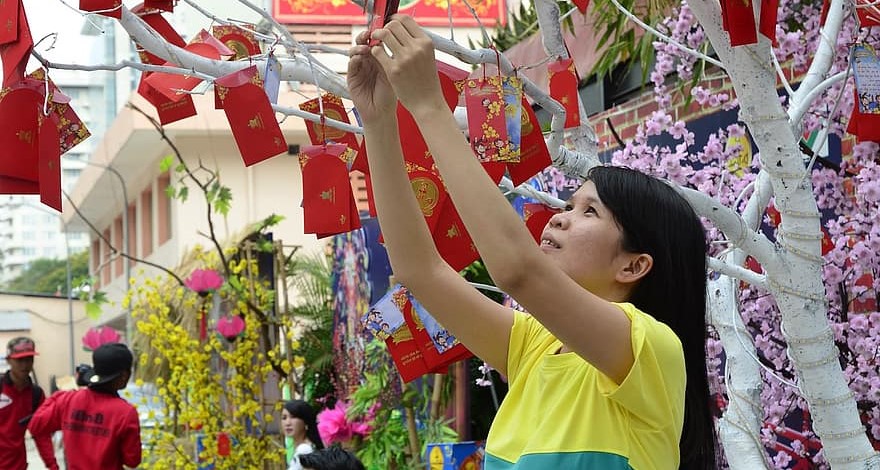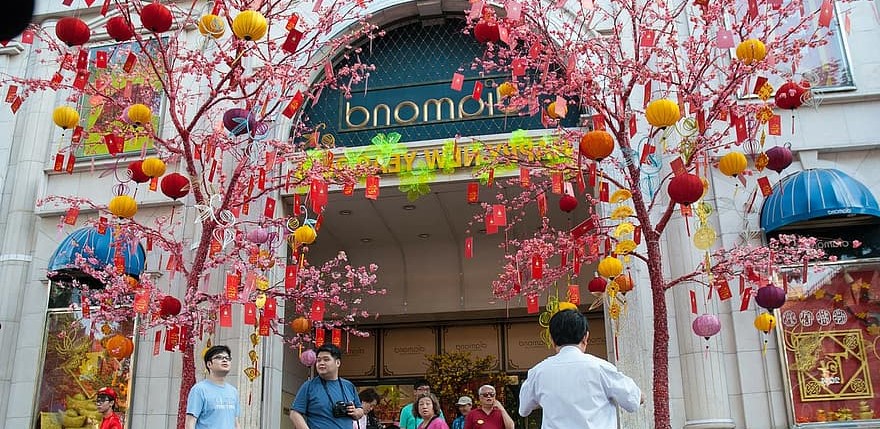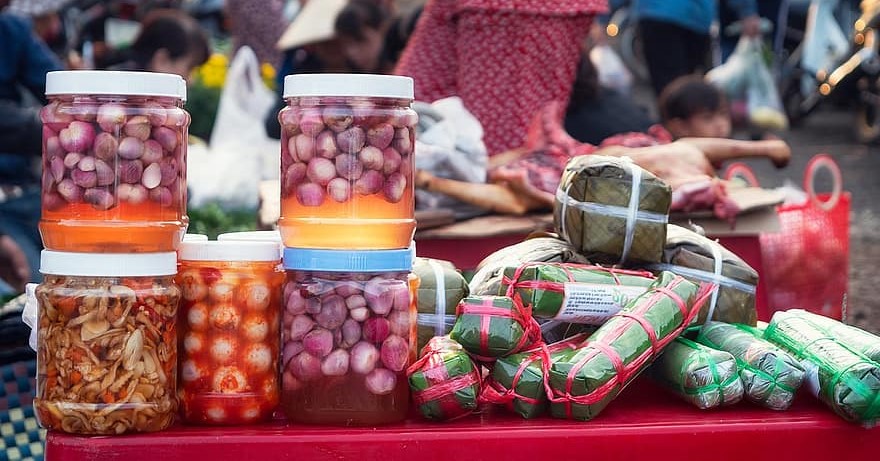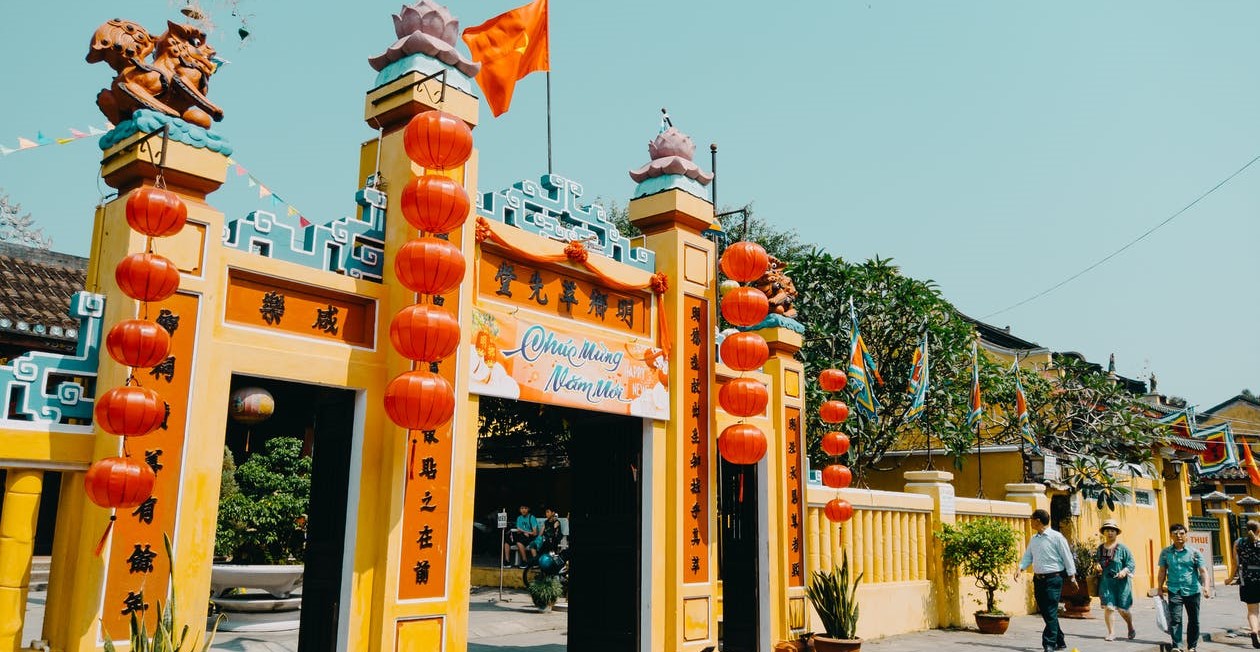How Much Lucky Money (Li Xi) to Give in Vietnam During Lunar New Year?
If you travel to Vietnam during the period of Vietnamese New Year or Tet, you may witness the practice of Lucky Money (or Li Xi), which is a traditional part of the yearly celebration.
Tet is the most important party in Vietnamese culture, which merrymaking usually lasts for about a week. Traditional Tet celebration is based on the quantum of traditions and customs including the Li Xi ritual, which is one of the favorite sources of joy and happiness for both children and adults.
From this article, you will find out about the history behind this old tradition and its meaning in Vietnamese culture.
Giving of Lucky Money

One hardly knows where and when this custom originated, but it is well known that this ancient tradition has existed for centuries. It dates back to the Tang Chinese practice of giving kids coins wrapped in red cloth. This was supposed to protect them from evil and make them happy. The legend also says that kings used to give their newborns silver or gold medallions wrapped in red cloth. This too had the purpose of warding off evil.
According to experts, the Li Xi custom may refer to the period when the Vietnamese people struggled through invasions and wars. These were very difficult times for the country, and both children and adults used to go through the hardships together. And celebrating Li Xi during the Tet festival was one of the few happy events people had in the old days.
In addition, Li Xi gave people a great boost in morale. Many local people who had to live through the war and famine as children, remember Li Xi as one of the few happy moments in their life. This is probably why the custom is so cherished today – for both old and young the Lucky Money party is considered as something special that gives hope for the future.
It’s interesting to note that Lucky Money is given by kids to their parents as well. The envelope with money includes a written note that wishes the receiver a Happy New Year and good luck in the present and the future. The New Year’s wishings are also an essential part of the tradition, and just as important as giving “Li Xi” to children.
There are a few other interesting customs that refer to the Tet period. One of them is giving each other salt in small bags, which is a Vietnamese “sign” of a “tasty” New Year.
During Tet people are not supposed to wear anything black or white. They predominantly dress in bright clothes, so that the next year would be bright and happy. Another popular belief is trying not to break any glassware during Tet – this way you guarantee that your New Year would not be broken.
What does LI Xi mean?

Li Xi tradition represents a few meaningful beliefs and cultural aspects.
First of all, for the Vietnamese people, Li Xi serves as a symbolic tribute to generosity. This is the initial and most important pretext of the Li Xi ritual that simply means happiness from giving something to others. Usually, Li Xi money is given to children as a gift. Children are always happy to get such a present because what is usually given today is not a few coins, but real money, which children either save or spend on something they like.
The second meaning of Li Xi is the belief that the ritual will help to prevent evil from happening. This makes Li Xi a kind of good luck charm because both the red color and the coin are associated with good luck. And there are quite a few beautiful legends that confirm this meaning of luck.
As for the red envelopes, they symbolize that the children should “eat more and grow stronger”. And this is a quite understandable wish associated with many misfortunes that locals had to get over in their distant and recent past.
The third meaning of Li Xi is remembrance. As we mentioned above, the older people remember the war and post-war hard times. Their children bring them Lucky Money gifts as a sign that the past is behind and the present and future will be much luckier for them than the past. This evokes only pleasant memories and creates a happy atmosphere.
In their return, parents and grandparents present their younger relatives Li Xi as well, since it is considered correct to give and receive. Everyone tries to exchange money: this is supposed to make everyone happier and strengthen eternal friendship.
The story behind Lucky Money
The Tet celebration includes many other interesting traditional events. Vietnamese use a lunar calendar; this is why Tet doesn’t have a precise date: each year the holiday is observed at the New Moon that falls at the end of January or the beginning of February.
Lucky Money is given out anytime during the Tet period. The Li Xi envelope should contain newly printed money without crumpling or tearing. The thing is that Vietnamese consider old money to be unlucky, and therefore unfit to be offered as Li Xi. If you decide to follow the tradition and present your friends Lucky Money, make sure it is all new.
Li Xi is also a great opportunity to send a person a message, such as a wish or a thank-you note. They are usually written for older people, grandparents, or parents, for it is a great way to make them happy that day. When the receivers are children, they usually promise that they will be good kids and study well.
How much money to include?

It stands to mention that Li Xi money is set to serve a symbolic purpose. In the old days, it is supposed to represent the coin that was usually placed into the envelope. Although people should look at the symbolic value of this gift, this is not often the case today. When you present Li Xi to somebody, you should put enough money to make the recipient happy.
These days it is advisable to put around 20 thousand VND if you make a present to a kid younger than 10. Older children are supposed to receive about 50 thousand VND, and the amount for adults varies. Today the standard for grown-ups is a sum of about 100 thousand VND.
Bear in mind that presenting an unfittingly small amount of money is considered bad luck. So, in order to escape an uncomfortable situation, try to present an envelope with more than enough, just in case. Besides, it is believed that the more you give, the more lucky things would happen to you that year.
However, in some cases, when the money is given to a stranger but not a close friend, it may become just fake paper bills – symbols that serve as placeholders and do not hold any real value.
Envelopes

Festive envelopes are perceived as important as money itself. Traditionally, they have to be red, but you are free to design them to your own taste. It is a common practice to decorate an envelope in gold because gold in Vietnamese culture is a symbol of wealth.
Most people purchase blank red envelopes and decorate them by hand. They often use traditional calligraphy to write wise sayings or wishes of health.



